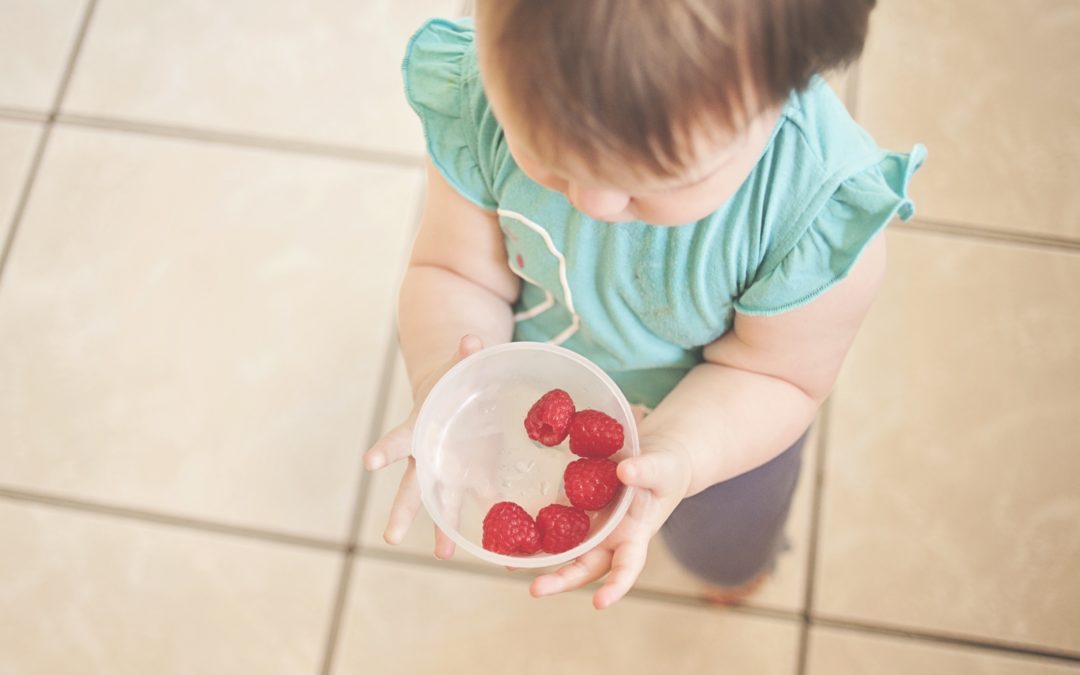Everyone knows self-feeding is an important, if not vital, skill all must learn in order to survive. Babies know it. Parents understand it. From birth, feeding is a way to develop a bond with your child and the beginning of two-way communication. Through caregiver responsiveness to their signals of hunger or need, children learn to expect that their needs will be met in a predictable manner and they form healthy attachments.
Feeding involves nearly every aspect of human development. Although many problems may begin by looking like ordinary concerns—trying to get the picky eater to eat a wider variety of foods—the truth is that poor feeding and eating patterns can negatively affect family life and the health of our little ones. As a parent I know that the frequency, intensity, and duration of these behaviors can often frustrate and negatively impact the family relationships and our day-to-day routines. One doesn’t have to look too far before they’ll find a new mother struggling with nursing, desperate to develop a strong bond with her first baby. Or the busy and exhausted parent rushing through the mealtime routine just to get to the next item on the day’s agenda. It’s become all too common: the frustrated parent trying to teach good eating habits to the picky eater in the family; the power struggle at the dinner table each night to have the child eat what is presented; the meltdowns from a child when told to eat the fruits, vegetables, and meats. All too often, the persistent parent only leads to power struggles and an even more resistant child.
So let’s take a look at this for a moment from a developmental perspective. A lot, and I mean A LOT, is going on at mealtime. It is a vivid, stimulating, and sometimes overwhelming sensory experience for children. The sights, smells, tastes, textures or feel of food (oral or tactile), and sometimes the sounds foods make, offer a wealth of sensory information. For some with sensory processing issues this information can bombard them and be too much to take in all at once. This is when you may see grimacing, whining, complaining, tears and crying, refusal, reduction in volume of food eaten, the sneaky child hiding food that wasn’t eaten, and the plate of food tossed to the floor in protest. The response to being presented with foods can vary by age and stage of development the child is in. Everyone knows that when it comes to eating new foods, a toddler holds the most veto power. Picky eating usually starts around 1 to 2 years of age and this is when some children begin to put on the brakes, either partially or entirely, when it comes to eating. They are developing, changing, growing, and testing boundaries. And in the case of those hiding uneaten food, starting to develop creative problem-solving skills! Sometimes parents may notice their child seemly overnight went from eating “everything” to what appears to be picky eating.
The message for everyone here is: Don’t give up, moms and dads! This is usually a normal part of development, and most kids outgrow this time of selective eating. Self-feeding skills are so important to keep working on. Here’s why: A child learning and practicing self-feeding skills is also developing other skills simultaneously. Strengthening of core muscles used for sitting, developing arm and hand muscles used for much more than just self-feeding, and facial muscles used for oral motor skills. As babies pick up Cheerios off of their food tray and toddlers learn to use a spoon and fork, they work on grasping patterns and increasing eye-hand coordination. Self-feeding develops and refines sensory processing skills and encourages the child’s independence.
So what happens when they don’t and what do we do about it? First, it’s important to understand that threats and bribes just don’t work! Don’t make a huge deal when they eat their broccoli or when they don’t. Don’t mention the targeted food item, just set it there on their plate and model eating nutritious foods yourself. Make mealtimes fun and allow food play and exploration (which can get a little messy!!) to encourage a healthy relationship with food. Encourage them to at least try out each new food item and take a “no, thank you” bite. Your child may not eat any or all of it on the first day, but she will eventually catch on and end up eating a balanced diet over a longer period of time. Another thing parents can do is to not be afraid to get their children involved in the kitchen with preparing the food. Children still may not eat it, but getting a front-row seat to see exactly how it is made can help to lessen anxieties around eating new things. And remember, these things take time! It may take lots of effort and repetition of presenting a wide variety of foods, and lots of messy practice with eating utensils before changes are seen. We are creating new neural pathways and responses with these types of challenges!
When things don’t seem to be resolving, or there are other more complex known issues such as missed milestones, an occupational therapist trained in feeding therapy can help determine and treat factors such as oral motor, fine motor, gross motor, visual, cognitive, or sensory processing development that could possibly be affecting your child’s occupation of self-feeding/eating. Don’t be afraid to reach out to your child’s pediatrician to ask for specialized help and guidance if you believe your child is not making progress toward appropriate self-feeding milestones. Together, your healthcare providers can devise an individualized plan that can help you and your family stay healthy and maintain a happy relationship around the dinner table.

